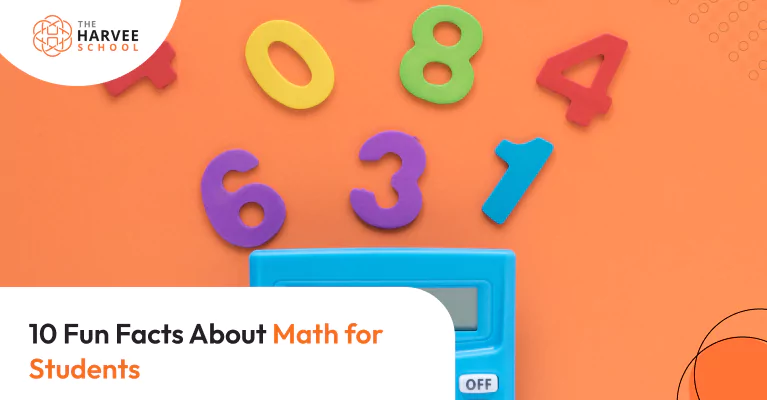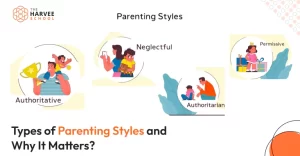10 Fun Facts About Maths for Students
Mathematics is more than just numbers and equations—it’s a fascinating subject that influences everything around us. From nature’s patterns to technology and space exploration, maths plays a crucial role. Here are ten fun facts about maths that will surprise and inspire students!
1. The Magic of Zero
Did you know that the number zero didn’t always exist? It was invented in India by the mathematician Brahmagupta in the 5th century. Before zero, people used blank spaces to represent the absence of numbers, but this was confusing. Zero revolutionized arithmetic and led to modern computing! It also plays a fundamental role in algebra and calculus, allowing complex equations to be solved easily.
2. The Only Even Prime Number
A prime number is a number that has only two exact divisors: 1 and itself. That means you can’t split it evenly into smaller whole numbers.
Examples:
2 is prime because you can only divide it by 1 and 2.
3 is prime because you can only divide it by 1 and 3.
5 is prime because you can only divide it by 1 and 5.
But… 4 is NOT a prime number!
You can divide 4 by 1, 2, and 4, so it’s not prime. It’s called a composite number instead.
Why is 2 special?
2 is the only even prime number because all other even numbers can be divided by 2, which means they have more than two factors. That makes them composite!
So, prime numbers are like special building blocks in math. They help us make bigger numbers, just like LEGO bricks help build cool structures!
3. The Fibonacci Sequence in Nature
The Fibonacci sequence is a special number pattern. It starts like this:
0, 1, 1, 2, 3, 5, 8, 13…
Did you see the pattern? Each number is made by adding the two numbers before it!
- 0 + 1 = 1
- 1 + 1 = 2
- 1 + 2 = 3
- 2 + 3 = 5
- 3 + 5 = 8 (and it keeps going!)
Where can you see it?
This pattern isn’t just in math—it’s everywhere in nature! You can find it in:
- Sunflowers – The seeds grow in spirals following the Fibonacci sequence.
- Pinecones – The scales make a Fibonacci spiral.
- Seashells – Many shells grow in a spiral based on Fibonacci numbers.
- Galaxies – Some galaxies have spirals that follow this pattern!
Why is it Important?
The Fibonacci sequence is used in art, music, and even the stock market! It helps people design beautiful buildings, create amazing paintings, and even predict trends in business.
4. A Pizza Can Be a Mathematician’s Delight
Imagine you cut a pizza into equal slices, but instead of cutting from the very center, you pick a random point on the pizza and slice from there. The slices might look uneven, but here’s the cool part:
If you add up every other slice, both groups will have the same total size!
That means if you and a friend take turns picking alternate slices, you’ll always get the same amount of pizza, no matter where you started cutting!
How Does It Work?
Even though some slices may look bigger than others, math proves that the total area of every other slice always adds up to be equal! It’s like magic, but it’s actually geometry!
The Pizza Theorem isn’t just about pizza—it helps in geometry, circular measurements, and even designing things like clock faces, pie charts, and wheels!
So next time you eat a pizza, impress your friends by telling them about this tasty math trick.
5. The Number Pi (π) is Infinite
Pi (π) is a super special number in math! It helps us measure circles. No matter the size of a circle. The value of Pi starts as 3.1415926535… and goes on forever without repeating! That’s why it’s called an irrational number—you can’t write it as a simple fraction.
Where do we use pi?
Pi is super important in:
- Building bridges and wheels
- Designing planets and orbits
- Understanding waves and sound
- Even making pizzas! (because pizzas are circles!)
Fun Fact!
People celebrate Pi Day on March 14 (3/14) because it looks like the start of Pi (3.14)! Some people even try to memorize thousands of digits of Pi!
6. The Birthday Paradox
Imagine you’re in a room with 23 people. How likely do you think it is that two people share the same birthday?
Most people would guess it’s a small chance, but here’s the surprising part: there’s actually a 50% chance! That means in about half the cases, at least two people will have the same birthday!
Why does this happen?
It feels strange because we think about our own birthday matching someone else’s. But in a group, we’re actually comparing everyone’s birthday with everyone else’s—that’s a lot of chances for a match!
With 23 people, there are 253 different birthday comparisons! The more comparisons, the higher the chance of a match.
Where is this used?
The Birthday Paradox isn’t just a fun math trick—it’s important in computer security!
- Cryptography – Helps find patterns in data encryption.
- Cybersecurity – Used to test password safety and security codes.
So next time you’re in a classroom or a party, try asking: “Who has the same birthday?” You might be surprised!
7. The Largest Known Prime Number
A prime number is a number that can only be divided by 1 and itself (like 2, 3, 5, 7…). But did you know that some prime numbers are HUGE?
In 2018, mathematicians found the biggest prime number ever—and guess what? It has over 24 million digits! If you tried to write it down, it would take thousands of pages!
Why do we look for big primes?
These giant prime numbers aren’t just for fun—they help keep our information safe!
- Online banking
- Passwords and encryption
- Securing messages
Computers use big prime numbers to create secret codes that protect our data when we shop online, send emails, or log into accounts. The bigger the prime, the harder it is to crack!
Are there bigger primes?
Yes! Mathematicians are still searching for even larger prime numbers using powerful computers. Maybe one day, you could help discover the next biggest prime!
8. A Mathematician’s Favorite Number – 6174
The number 6174 is a very special number called Kaprekar’s Constant. Here’s how it works:
Take any four-digit number (as long as it’s not a digit like 1111, where all digits are the same).
Arrange the digits of that number in descending order (biggest to smallest) and ascending order (smallest to biggest).
Subtract the smaller number from the bigger number.
For example:
Let’s try it with the number 3524:
Descending order: 5432
Ascending order: 2345
5432 – 2345 = 3087
Now, repeat the process with 3087:
Descending order: 8730
Ascending order: 0378
8730 – 0378 = 8352
And again with 8352:
Descending order: 8532
Ascending order: 2358
8532 – 2358 = 6174
Guess what? You always end up with 6174, no matter what four-digit number you start with (except for repdigits like 1111)! 😲
Why is this cool?
Kaprekar’s Constant shows us that numbers have hidden patterns and mysterious tricks.
9. The Rule of 9
There’s a neat trick in math that helps you check if a number is divisible by 9 without actually dividing it. Here’s how it works:
Add up all the digits in the number.
If the sum of the digits is a multiple of 9, then the whole number is divisible by 9!
Let’s try an example with 729:
Add the digits: 7 + 2 + 9 = 18
18 is a multiple of 9 (because 18 ÷ 9 = 2).
Therefore, 729 is divisible by 9!
This rule makes it really easy to check if a number can be divided by 9, which is helpful for quickly solving math problems and spotting errors.
10. Mathematics Can Predict the Future
Mathematics is like a superpower for predicting what might happen next! With the help of probability and statistics, we can make educated guesses about all sorts of things.
Weather – By looking at patterns from the past, we can predict if it’s going to rain, snow, or be sunny tomorrow.
Stock Market – Math helps experts predict whether the prices of stocks will go up or down, so businesses can make better investment decisions.
Diseases – Doctors and scientists use math to predict how diseases might spread, so they can take action to help keep people safe.
Space Exploration – Math helps scientists plan missions to explore space, like landing a rover on Mars or sending astronauts to the Moon!
Math isn’t just about numbers on paper—it’s what powers artificial intelligence (AI), helps us make data-driven decisions, and even allows us to build robots!
So, next time you see a weather forecast or hear about a new invention, remember: it’s math that makes it all possible!
Final Thoughts
Mathematics is everywhere, and its wonders never cease to amaze us! Whether it’s patterns in nature, quirky numerical properties, or real-world applications, there’s always something new to learn.
Beyond just solving equations, maths helps develop logical thinking and problem-solving skills, which are valuable in every field of life.






